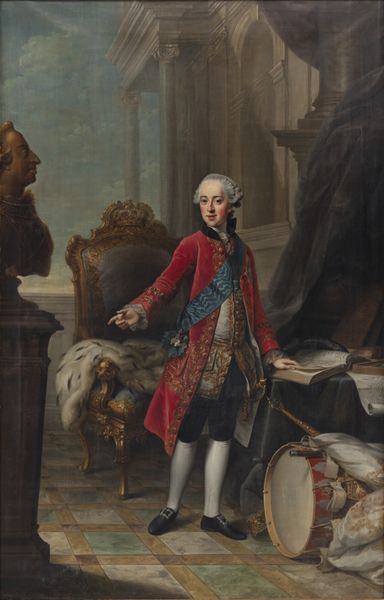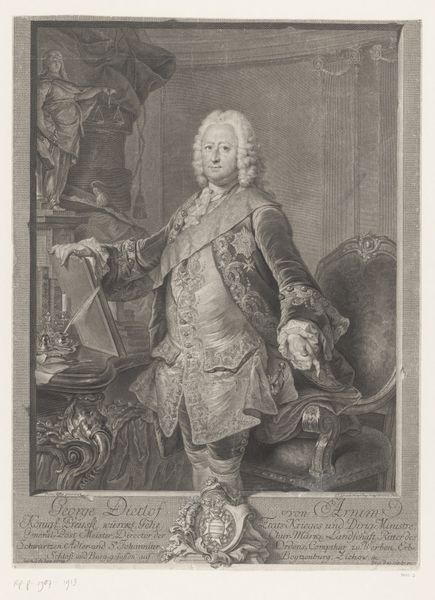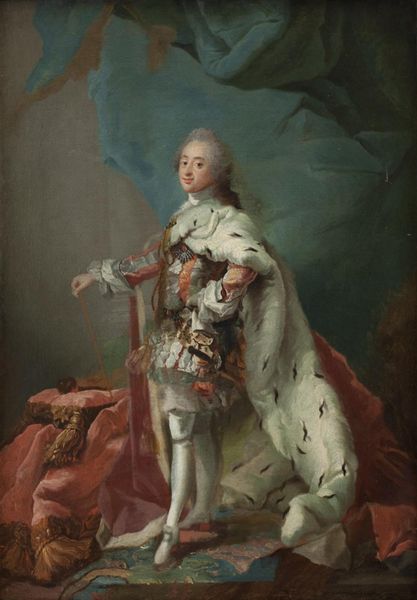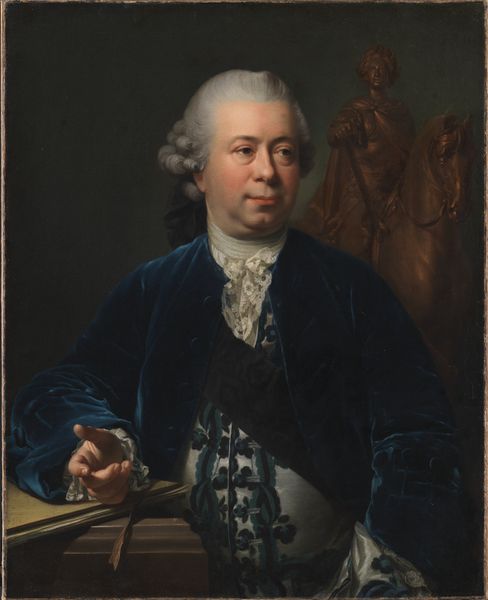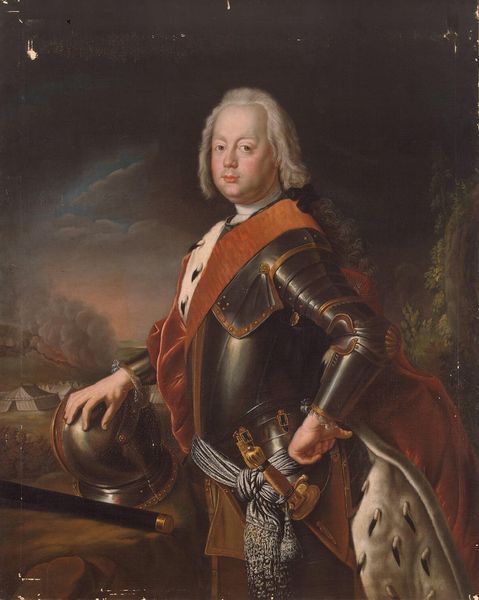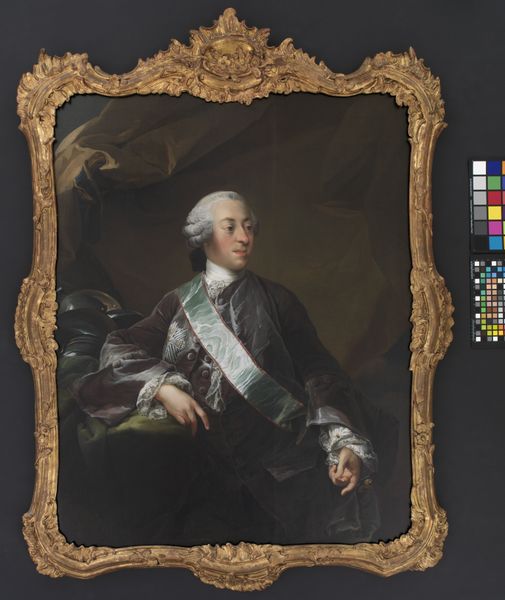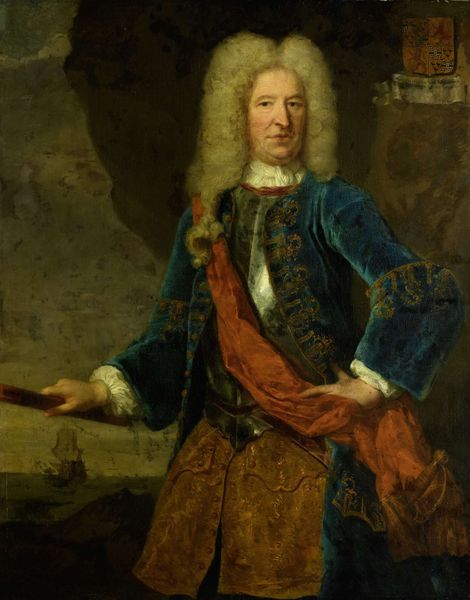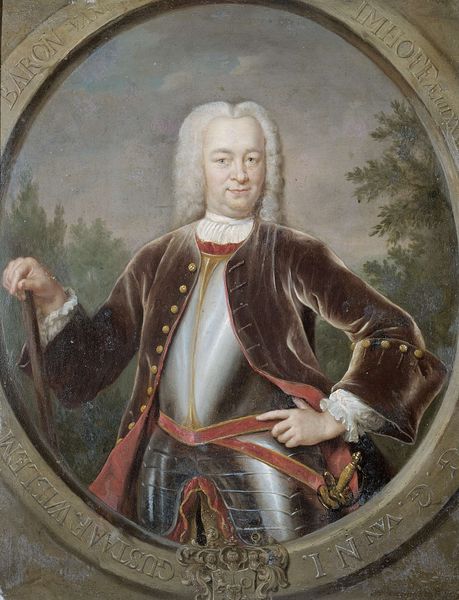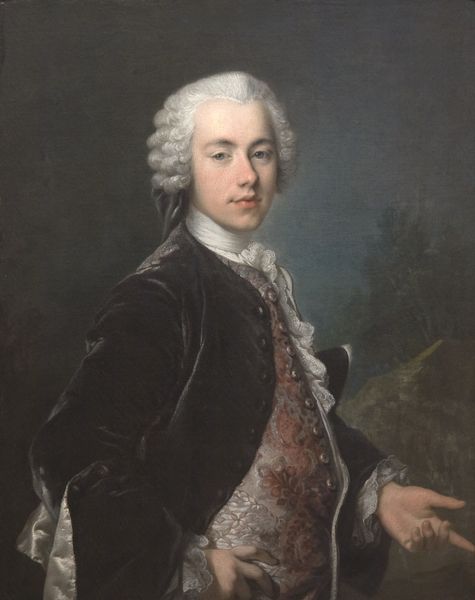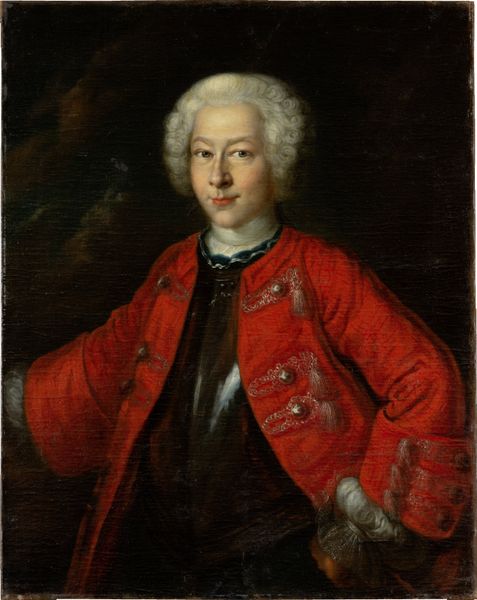
oil-paint
#
baroque
#
oil-paint
#
oil painting
#
history-painting
Dimensions: height 76.5 cm, width 58.5 cm, depth 14.5 cm
Copyright: Rijks Museum: Open Domain
Curator: The formality in Hans Hysing's "William IV, Prince of Orange," thought to be completed between 1730 and 1751, practically radiates off the canvas. Painted with oils, it gives a feeling of reserved power, wouldn't you say? Editor: Absolutely. And maybe a hint of sadness? The pose is quite regal, the trappings are all there – the armor, the drapery, the distant statuary – but the Prince’s gaze seems to convey a certain melancholic detachment. Curator: Indeed. Think about the Dutch Republic's history; William is presented amidst symbols echoing earlier times. That draped flag recalls military banners, armor indicates nobility, and a partly visible, classical statue behind him is not a pure antique allusion, but rather allegorical statuary, popular in the baroque era to denote virtue, success and a connection to eternity. It ties William IV to established conventions of power through familiar visual emblems. Editor: I see that, and yet the context interests me equally, even more so. Considering this work was made between 1730 and 1751, we're in a period rife with colonial expansion, social stratification, and nascent Enlightenment ideas, that, in time, will overturn the political status quo. To what extent is Hysing’s Prince aware of his own power and the complex system upon which it depends? It looks almost as if his own hand has rested so heavily that it begins to erase or obscure the script on that parchment. Curator: Well, portraits, particularly in this period, serve as proclamations more than personal reflections. The meticulous brushstrokes depicting his rich clothing underscore that proclamation, each texture signifying his role in the hierarchical society he presides over. So perhaps that ‘erasure’ or soft brushstroke merely acts as the anchor in an asymmetrical composition to tie him to objects connoting governance? Editor: Perhaps, and it underscores the limitations of interpreting a single image outside its moment. Understanding those symbolic objects allows a deeper consideration not just of what was visible, but also who the work was meant to convince, and which social contracts it obscures even in its attempts to solidify. Curator: A lovely intersection of artistic legacy and cultural questioning. It gives the portrait a presence reaching far beyond its gilded frame. Editor: Absolutely. This artwork, though formally traditional, opens up dialogues vital for our current perspectives.
Comments
No comments
Be the first to comment and join the conversation on the ultimate creative platform.
